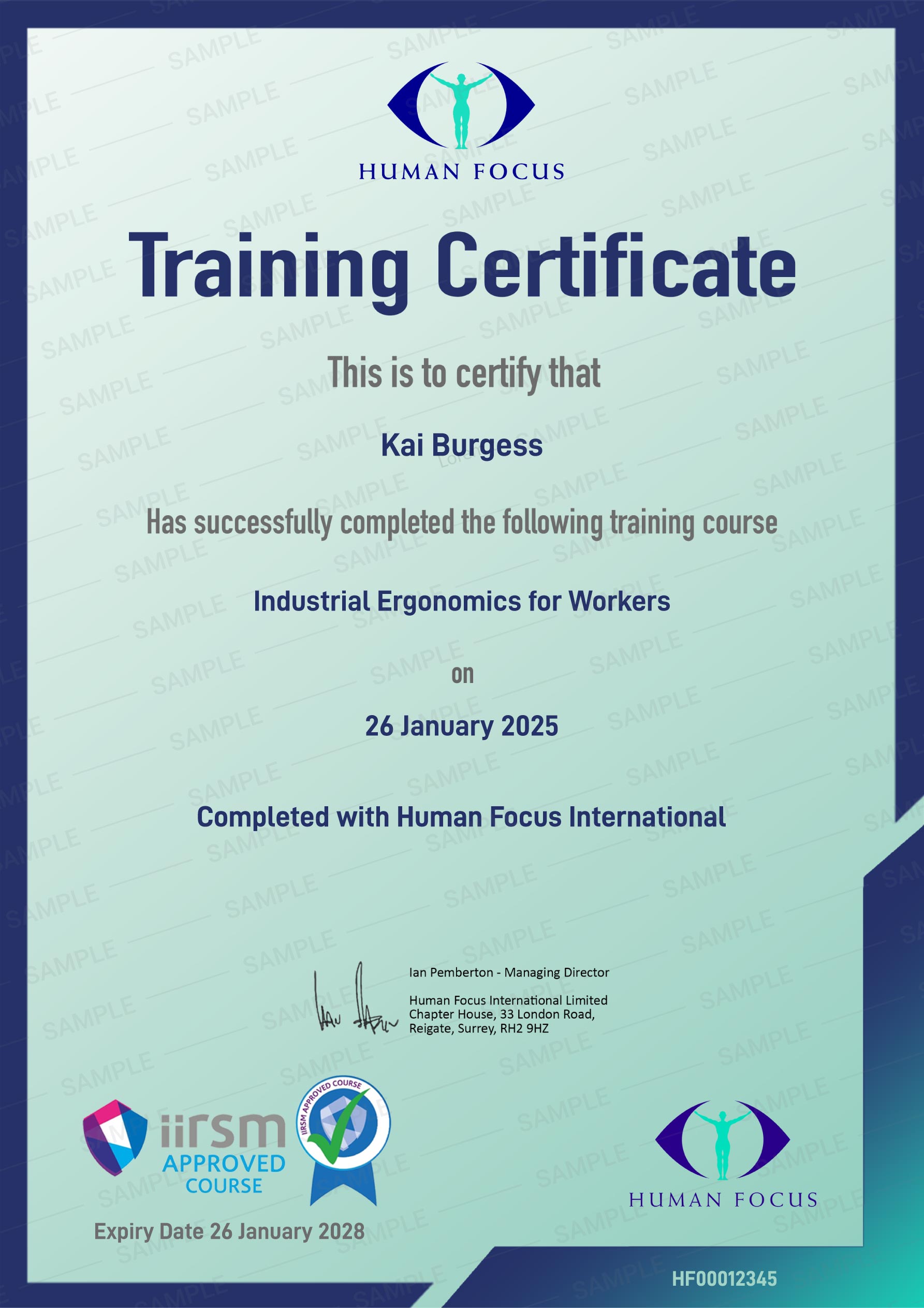This IIRSM-approved Industrial Ergonomics for Workers training course offers essential guidance on identifying and managing ergonomic risks to help prevent long-term injuries.
The course explores common ergonomic hazards faced by industrial workers and effective ways to address them. It also highlights health disorders caused by poor ergonomics and their first symptoms to support early intervention. Workers will be better equipped to apply ergonomic principles to their tasks and promote long-term health and productivity.








